PROTECT YOUR DNA WITH QUANTUM TECHNOLOGY
Orgo-Life the new way to the future Advertising by AdpathwayGrowing bulbs in containers is an excellent way to add spring color to your porch, patio, or entryway. It’s a great way to experiment with creative layering and create the most visually appealing display. Because they bring your flowers closer to eye level, it’s easier to notice their stunning colors and intricate shapes.
Potted bulbs may not look like much over the winter, but when the frost wears off, you’ll have a bounty of blooming flowers. By planting in containers, you can control your soil and sun exposure. It’s easy to create a big impact by moving them into spaces where you will see them most often.
Make sure to plant your bulbs in pots that have excellent drainage and loose, fertile soil. In mild climates, you can leave them outdoors through the winter, and they should perform well in the spring. In cold climates, a bit of insulation will help, so move them to a sheltered, but unheated space.
Creating combinations with your potted bulbs is easy. There are endless possibilities to create with different flowers, forms, and colors. Here are some of our favorite combinations to experiment with.
Dayton Ocean Recycled Planters
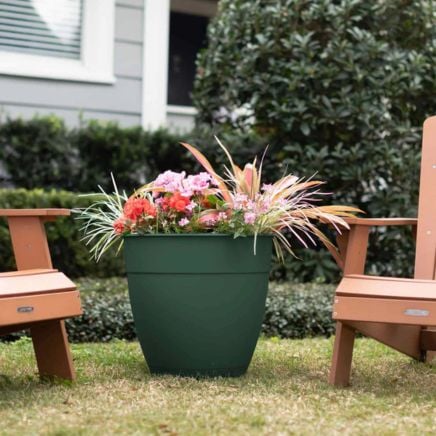
Dayton Ocean Recycled Planters

Power Planter Bulb Planting Auger
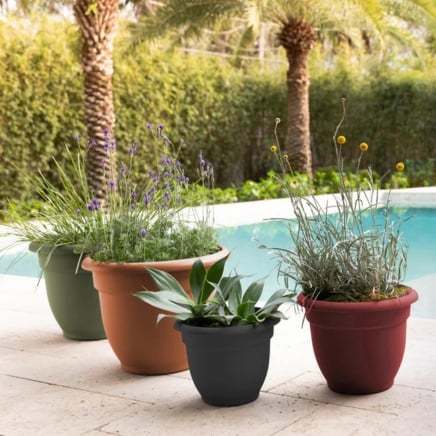
Tulip and Muscari
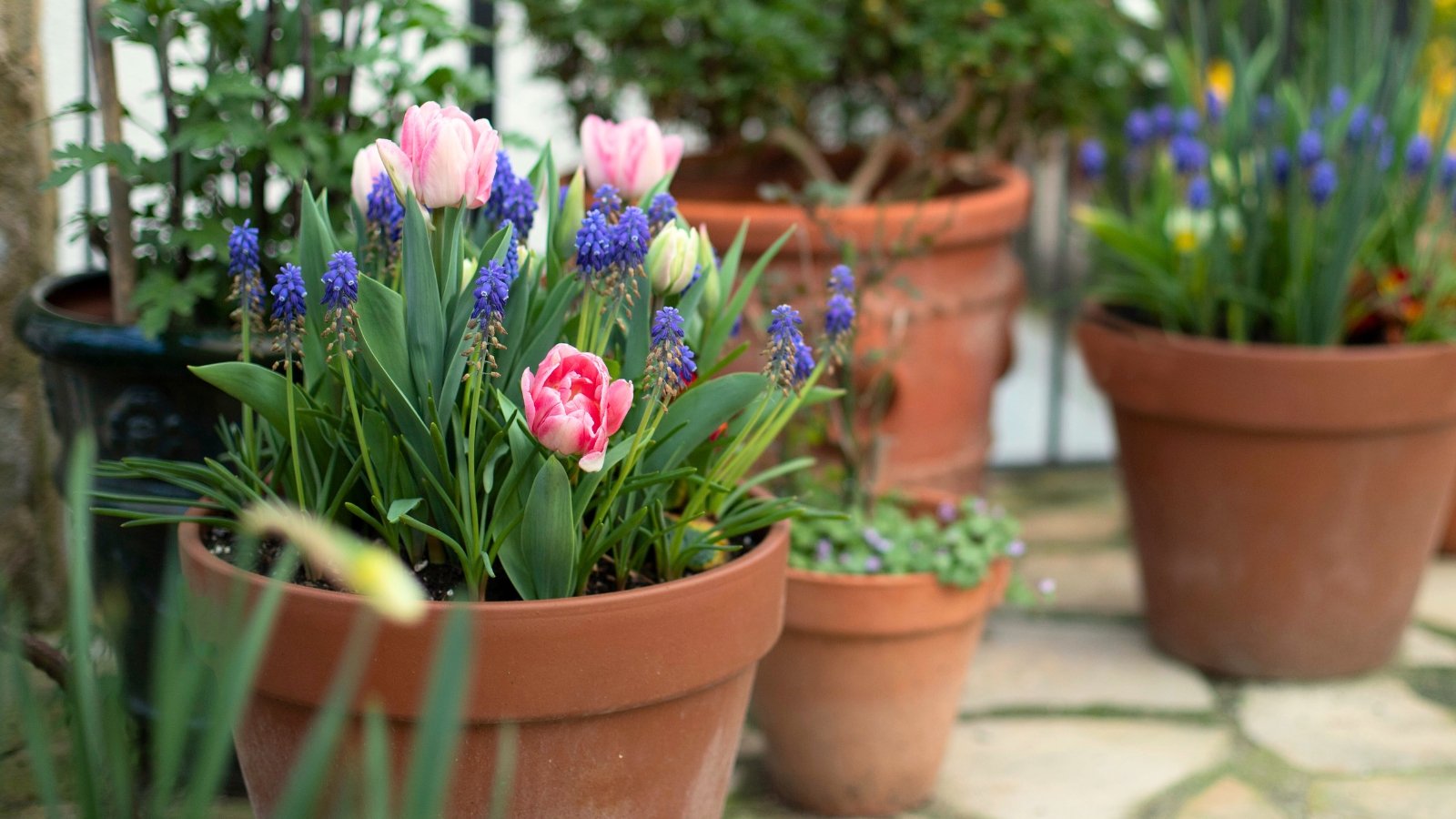 Pink petals nod while little purples crowd underneath.
Pink petals nod while little purples crowd underneath.Tulips and muscari work beautifully together. They are visually and culturally compatible, and complement each other well. Muscari are low-growing with clusters of small, rounded flowers. Tulips are taller and single-flowered with broad, graceful leaves. Together, they create an attractive layered effect.
Tulips and muscari both thrive in full sun to partial shade. They also both like well-drained soil. If you want this combination to bloom at the same time, pair your muscari with mid to late-season tulips.
Here, we’ve chosen a soft and feminine color palette. Pretty pink tulips just barely peek over the tops of purple muscari. This is a classic combination that blooms right around Easter. The casual terracotta container feels like a cottage garden staple.
Muscari, Hyacinth, and Daffodil
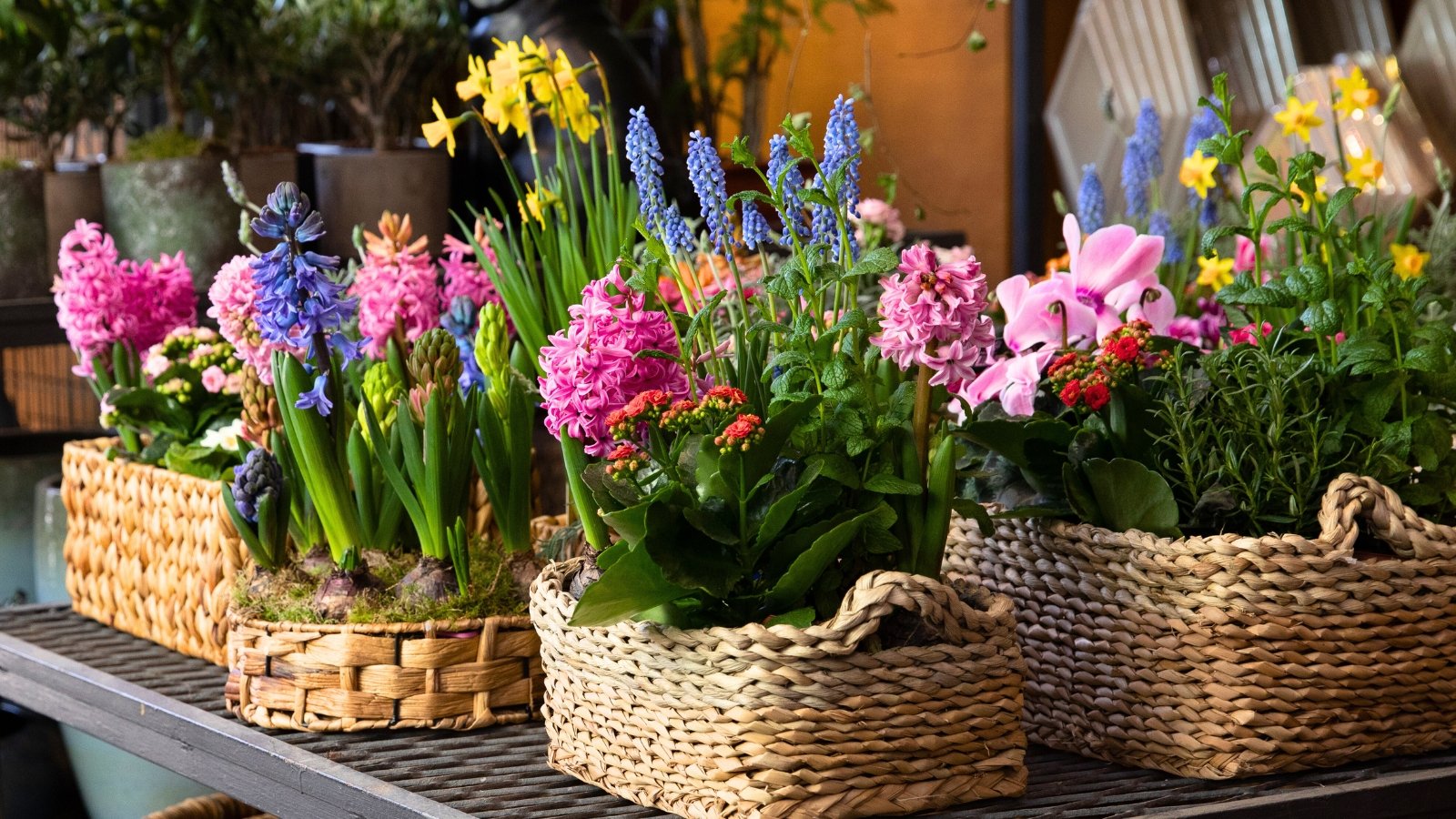 Blue muscari grows above bold spring colors.
Blue muscari grows above bold spring colors.This cheerful combination would bring a smile to anyone’s face and brighten up any spring rain shower. Pink hyacinths paired with blue muscari and brilliant yellow daffodils are timeless.
Hyacinth bulbs bring big, bold color and a powerfully distinct fragrance. In my opinion, this is the true scent of spring. Paired with brilliant yellow daffodils, the two are all warmth and sunshine.
Delicate blue muscari contribute cool refinement. They won’t take the limelight from their more flamboyant companions, but add the perfect complement. The combination would be incomplete without their simple grace.
This spring bulb combination works because all members bloom close together, but not simultaneously. The slight staggering creates a wildflower vibe that showcases each flower’s cycle in tandem with the others.
Tulip and Crocus
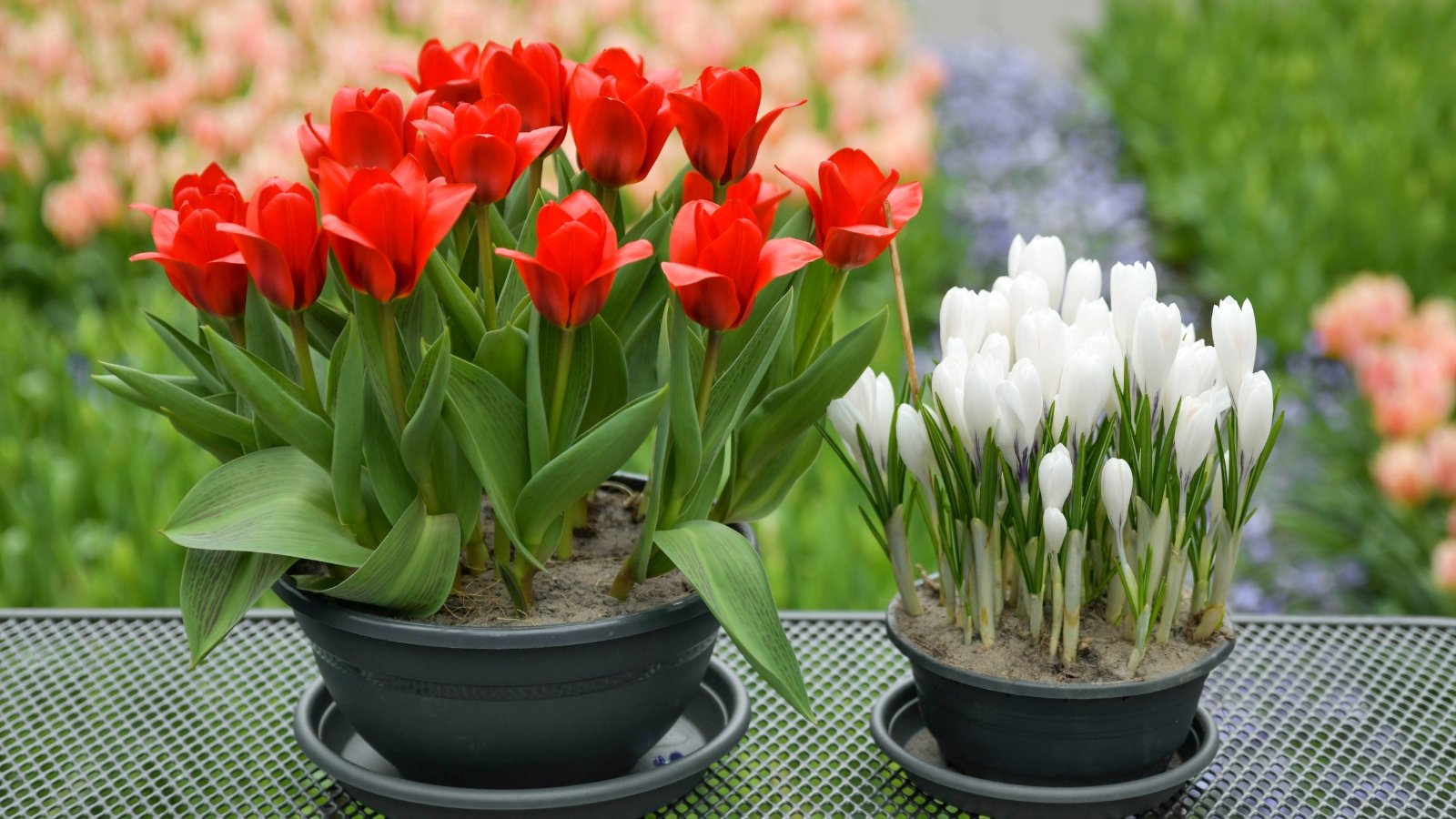 Bold red petals rise after gentle white blooms.
Bold red petals rise after gentle white blooms.If you want a subtle, but long-lasting spring bulb combination, pair tulips with sweet, delicate crocuses. Crocuses are some of the earliest bloomers, so choose an early-blooming tulip variety to get the most out of this pairing.
Early crocuses will light up your container garden as soon as the snow melts. Early-blooming tulips will be starting to open just as the crocuses are in full bloom. The staggered succession of color feels natural and beautiful.
Here, white crocuses echo the winter snow that melts just as they peek up through the soil. Their delicate beauty isn’t diminished, but amplified by the bold red tulips that follow close behind.
Crocus, Daffodil, and Muscari
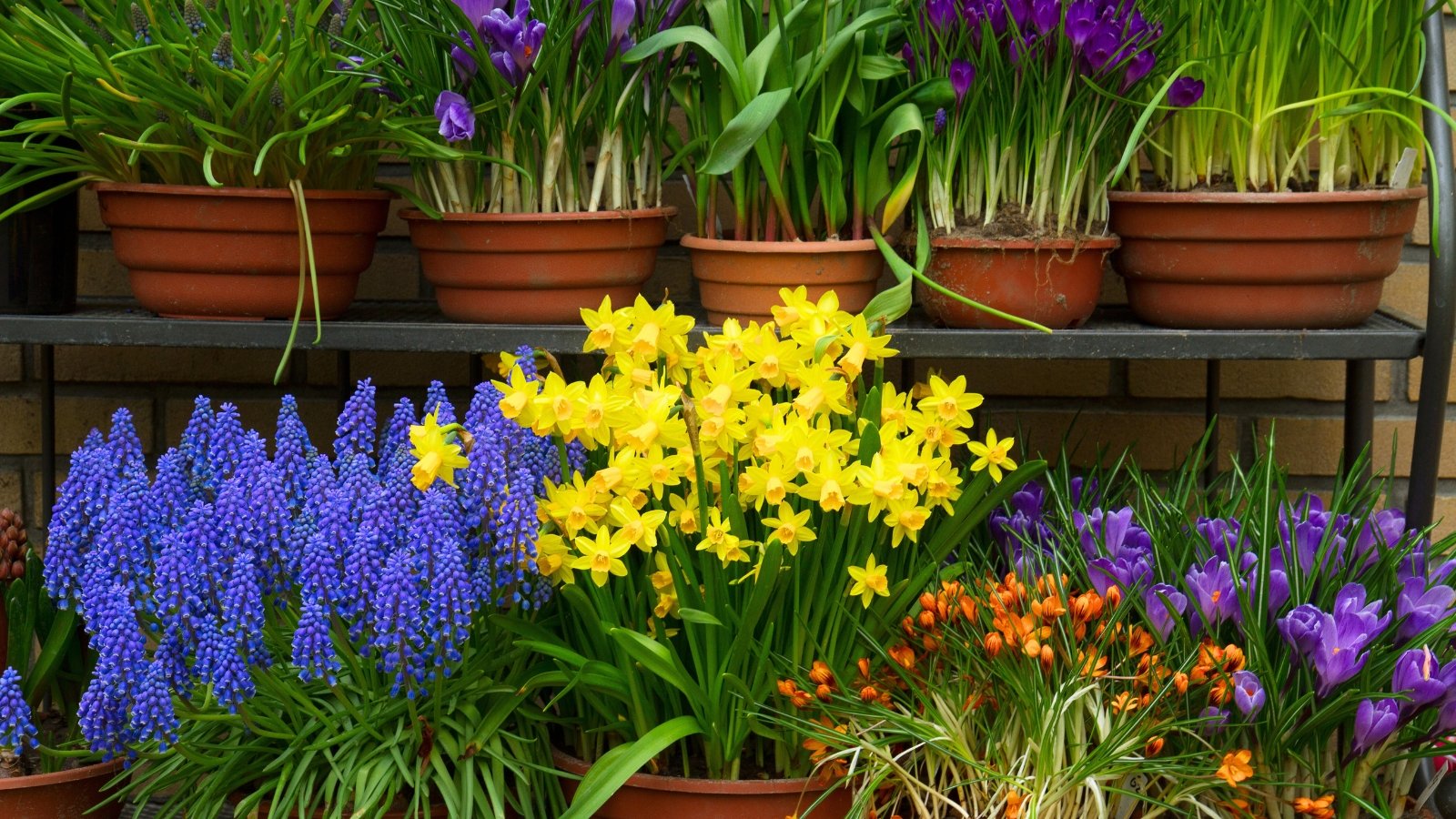 Small blue blossoms quietly complement taller yellow flowering stems.
Small blue blossoms quietly complement taller yellow flowering stems.This spring bulb combination gives you a long-lasting display with great versatility. Crocuses bloom first, waking up the spring with their bright pops of color. Here they are in shades of violet, plum, and orange, an unexpected addition.
Daffodils are early to mid-spring bloomers and last a long time. Their gorgeous, golden trumpets are the harbinger of the spring garden. They bring height and warmth to this combination.
Muscari, once again, are a subtle part of the display, but an integral one. These are long-blooming spring bulbs, as they’re made up of many small blossoms that open in succession. They bloom right around the same time as daffodils.
I love this arrangement with the varied terracotta containers. The warm reddish orange tones are a perfect complement to the cool colors of the crocuses and muscari. Layered in this way, it reminds me of a flower shop I marveled over in Paris years ago.

Hyacinth and Crocus
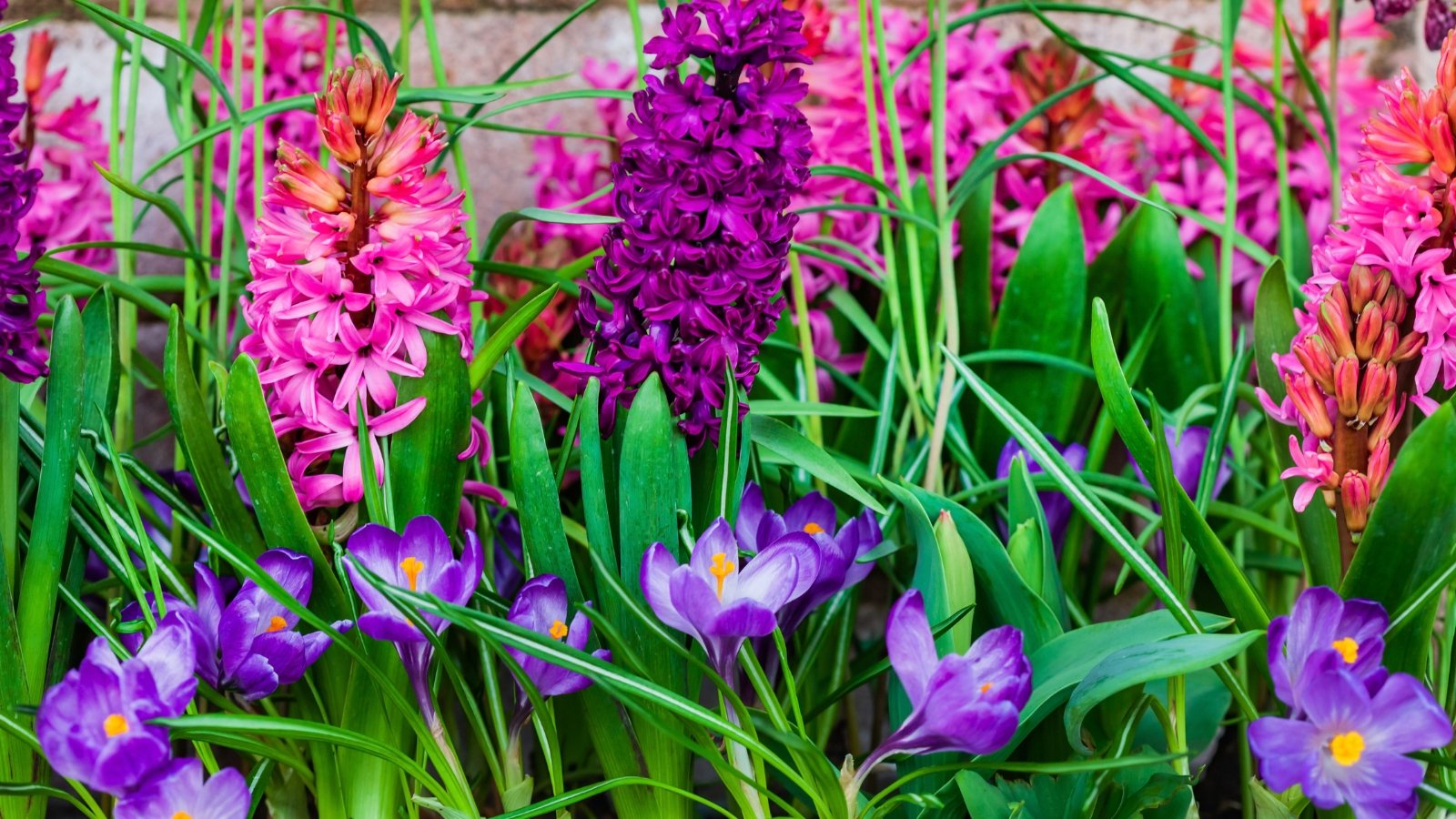 Early blooms peek out while taller flowers awaken.
Early blooms peek out while taller flowers awaken.This bold and vivid combination of spring bulbs is a lovely pairing. If you want both early color and fragrance, it can’t be beat. The bold shades in this combo are great for heading into the warmer months at full speed.
Crocuses bloom first, and while they do, hyacinths are just getting started. They will hang on just long enough to lend a cool purple splash to the electric tones of these pink and purple hyacinths.
Crocus bulbs are small and require shallow planting, which is the opposite of the hyacinth bulbs. This makes them ideal for layering in the same container. Planting the two together will extend the beauty of your arrangement for a longer blooming period.
Crocus and Scilla
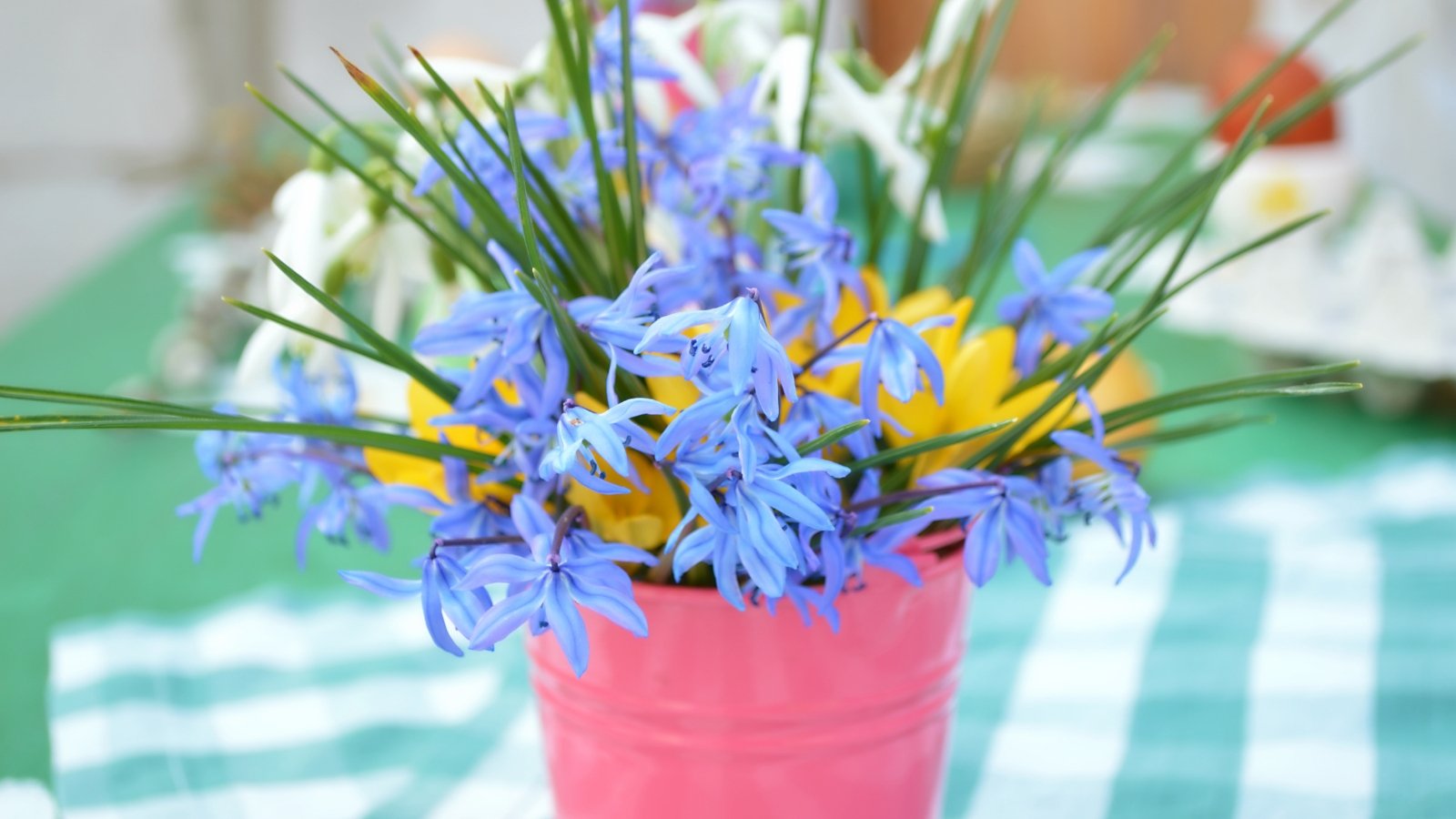 Small flowers brighten shaded corners with subtle elegance.
Small flowers brighten shaded corners with subtle elegance.If you want a sweet and small spring bulb container combination, this pairing of crocuses and scilla is perfection. These two low-growing, early bloomers are delicate beauties that won’t overwhelm any space, no matter the size.
Crocuses offer their early bloom time as an incredible asset. Sweet, blue scilla are close behind, though. Both of these have a fine, wildflower vibe, and together they make an obvious pair.
A nice aspect of this spring bulb combination is that they both tolerate partial shade. These woodland wildflowers will live quite happily with a few hours of sun, so it’s a versatile pairing.
Hyacinth and Tulip
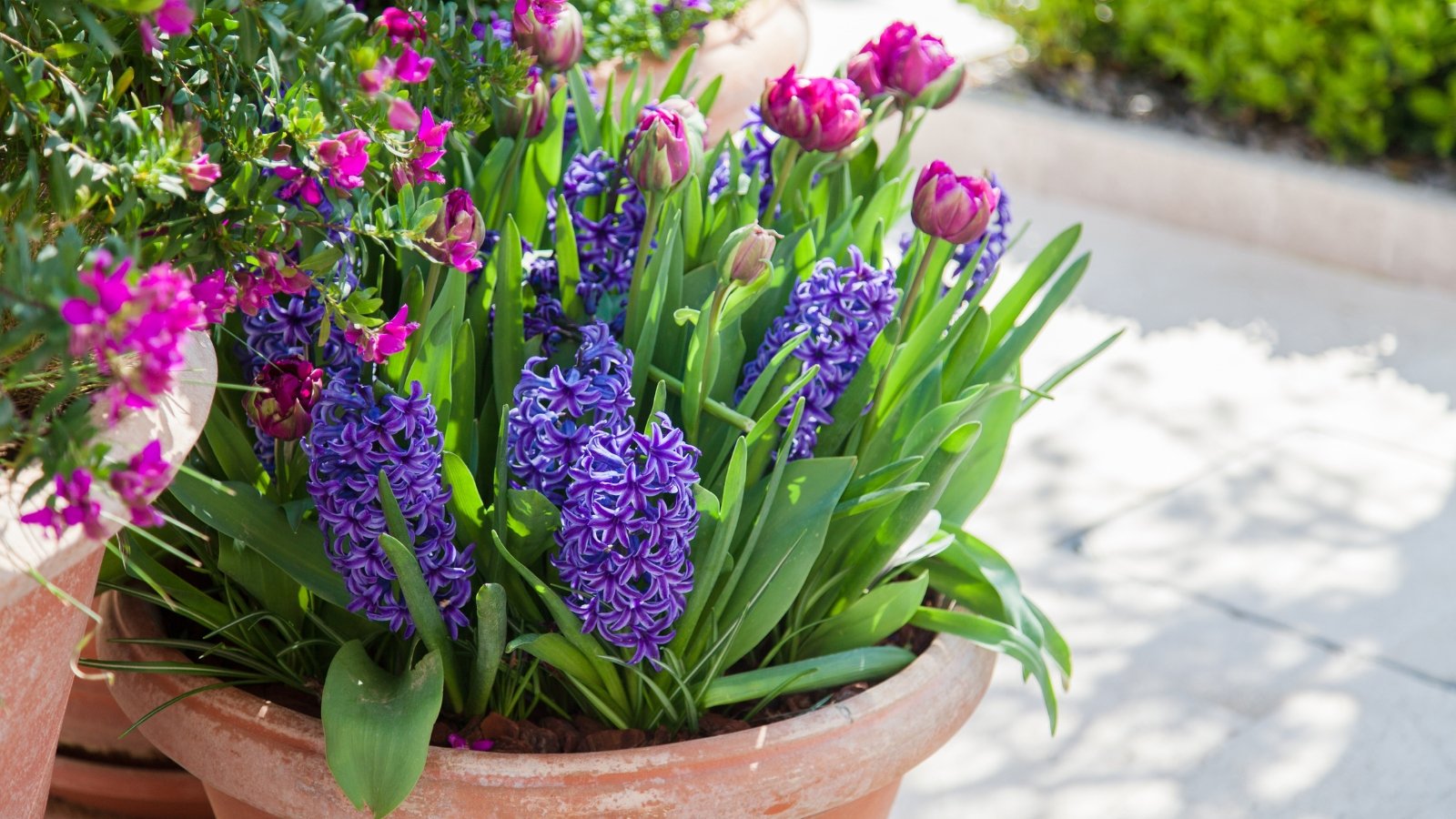 These flowers pop up like tiny joyful fireworks.
These flowers pop up like tiny joyful fireworks.This powerhouse pair of spring bulbs is a showstopping combination that brings big, bold color when the season is in full swing. If jewel tones are your thing, pairing hyacinths with tulips will be right up your alley.
Hyacinths always make a statement. Their large flower clusters in shades of pink, purple, and white are deliciously fragrant. Pile in some tall, commanding tulips, and you’ve got a container arrangement worthy of a prime location.
This pairing of blue-violet hyacinths with delicious, hot pink tulips is vivid and elegant. You can almost smell the mingling of floral hyacinth with that fresh, green tulip fragrance that holds just a hint of musk.
Tulip and Daffodil
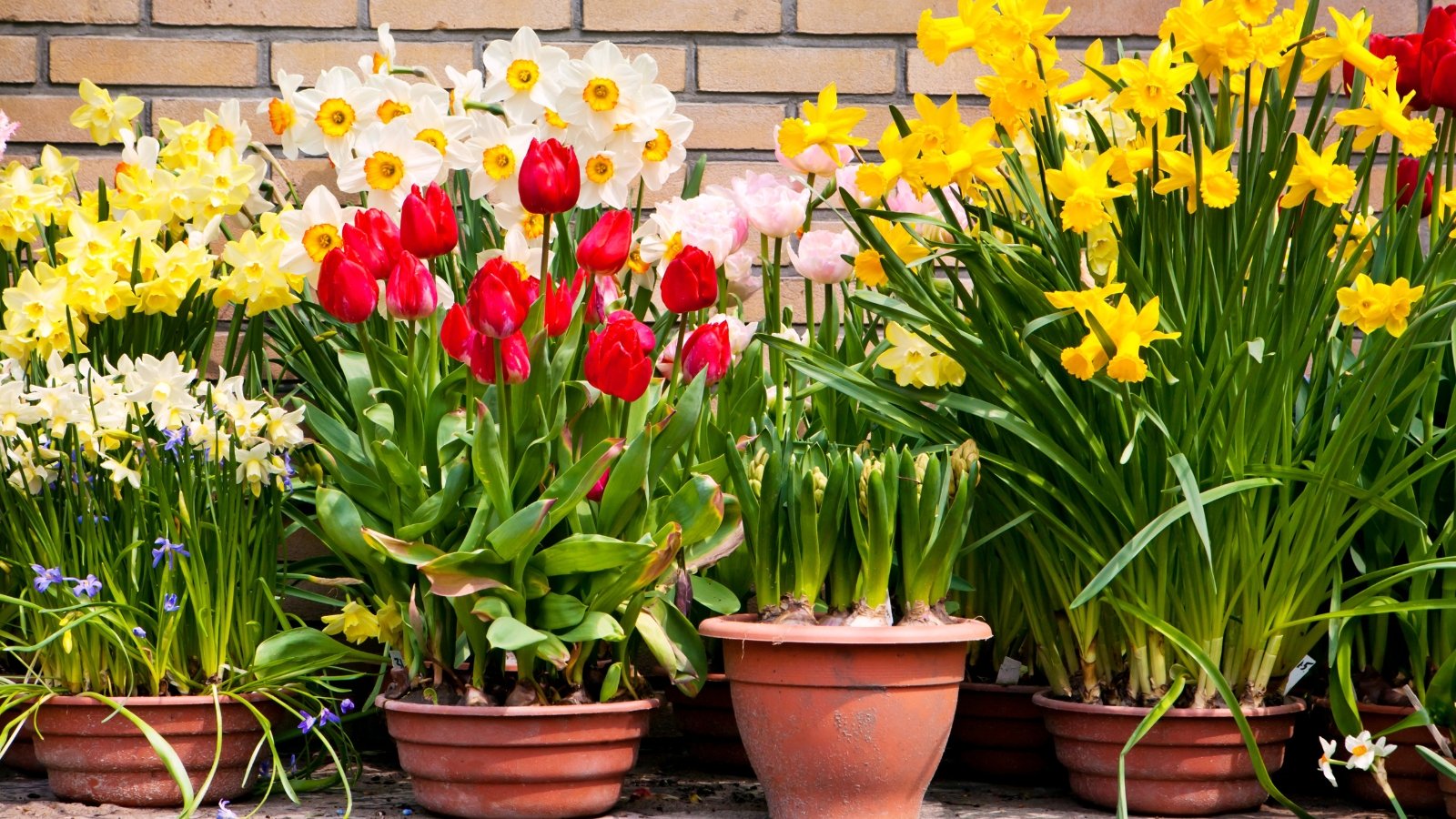 Green leaves peek between brighter colored flowers.
Green leaves peek between brighter colored flowers.I don’t like to say that any spring bulb combination is superior to the others, but if there were, it would be this one. Tulips and daffodils are the two most popular and well-known spring bulbs you can plant.
Daffodils usually bloom slightly ahead of tulips. So, you get more time from this combination than from either one on its own. They have similar needs, but their forms are nothing alike, so there is a contrast visually.
I love this combination of pink and red tulips with yellow and white daffodils. But you can’t go wrong with any combination. Mix it up or stick with a specific color palette. The sky is the limit!
Tulip and Iris
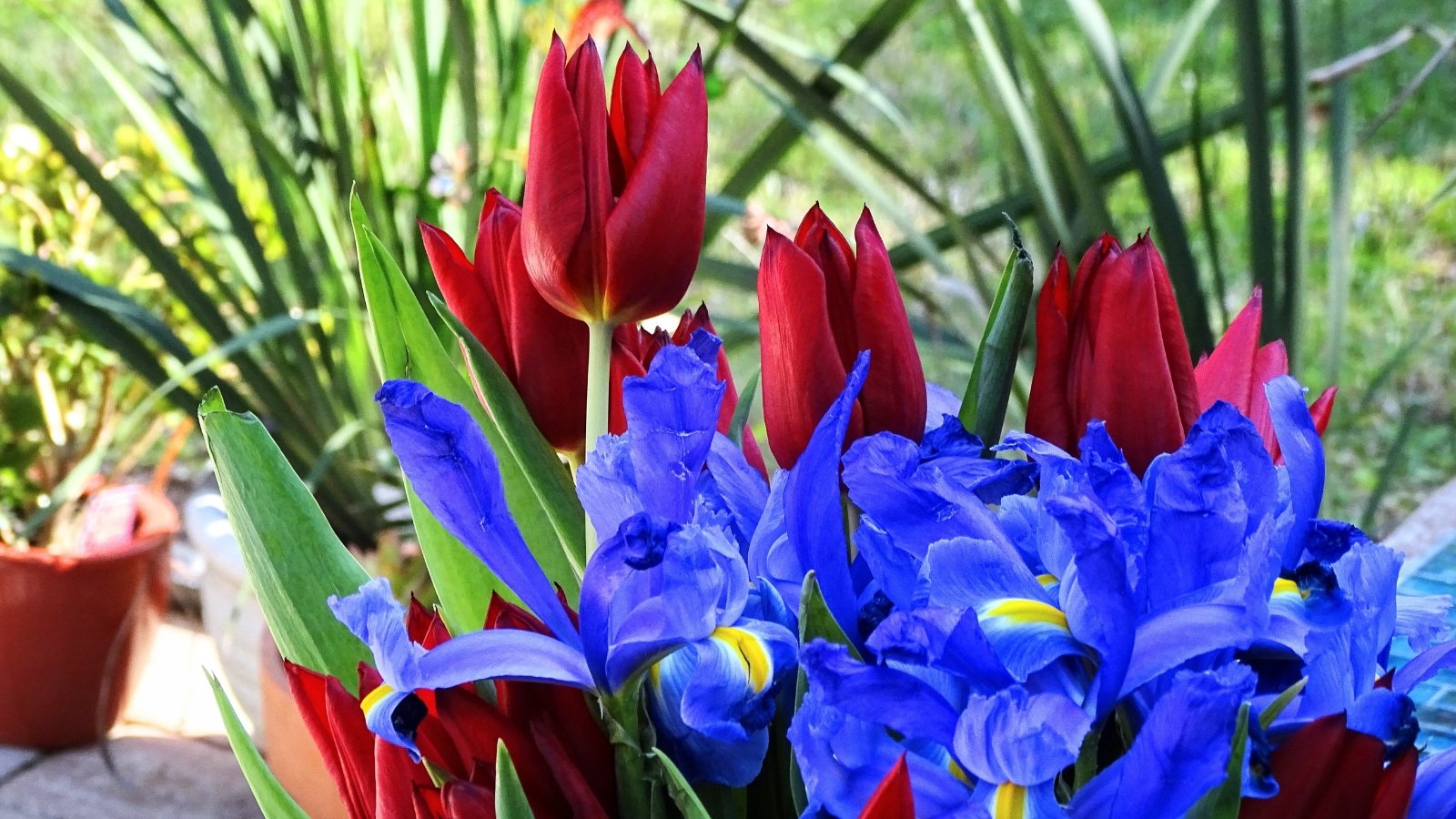 Red and blue shine together under morning sunlight.
Red and blue shine together under morning sunlight.If tulips and daffodils are the classic spring bulb combination, tulips and irises are her classy older sister. There is a special refinement in this pairing that none of the others seems to possess.
Tulips and irises are a striking combination. The overlap in bloom time and similar needs make them a low-maintenance planting. Depending on the variety of tulips, you can control the way these two interact.
This specific pairing is one I just can’t take my eyes off of. The simple lipstick red tulips have sophisticated simplicity. The brilliant blue irises feel carefree by comparison, and the chemistry between the two is pure magic.


 3 days ago
12
3 days ago
12
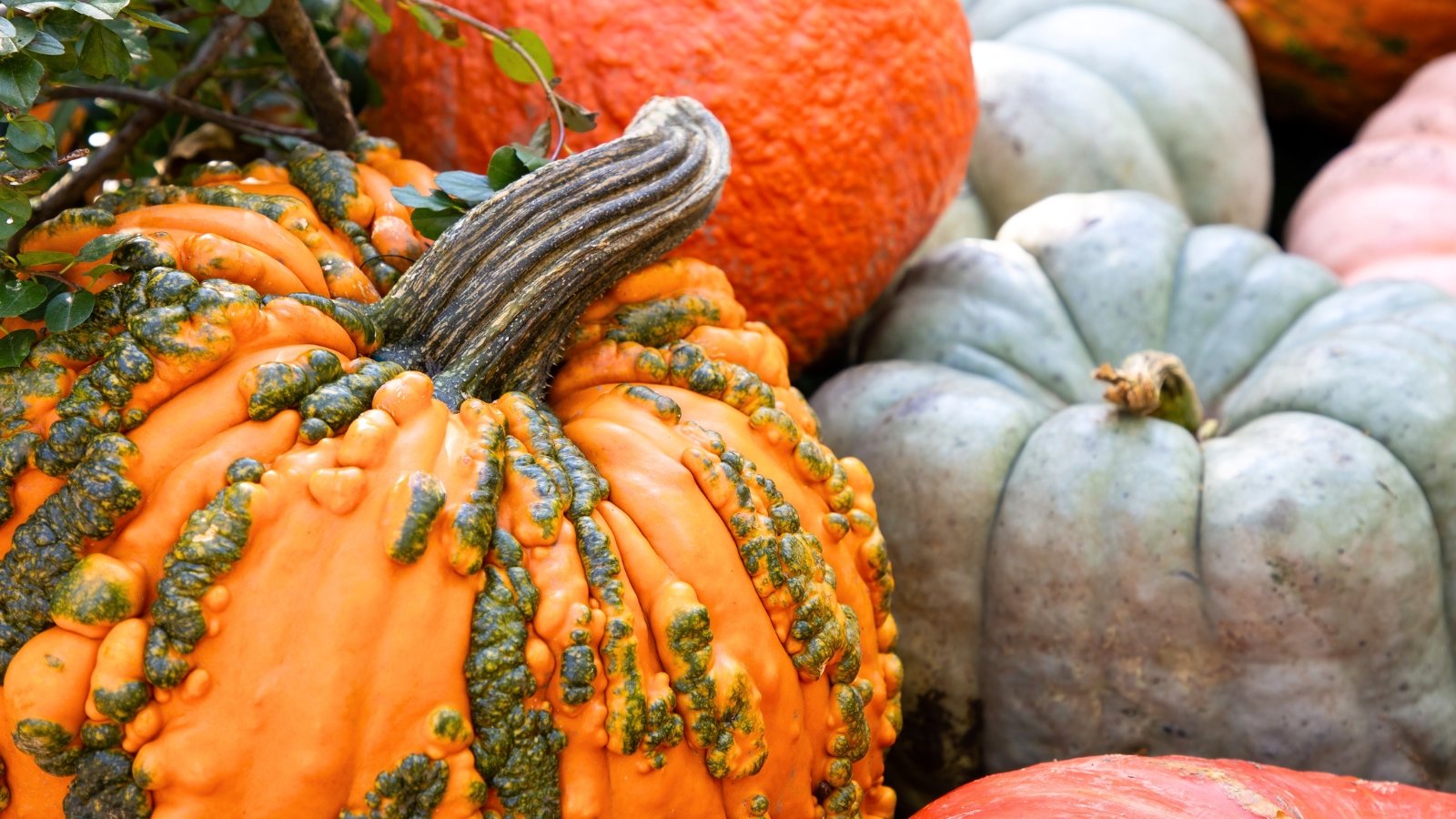
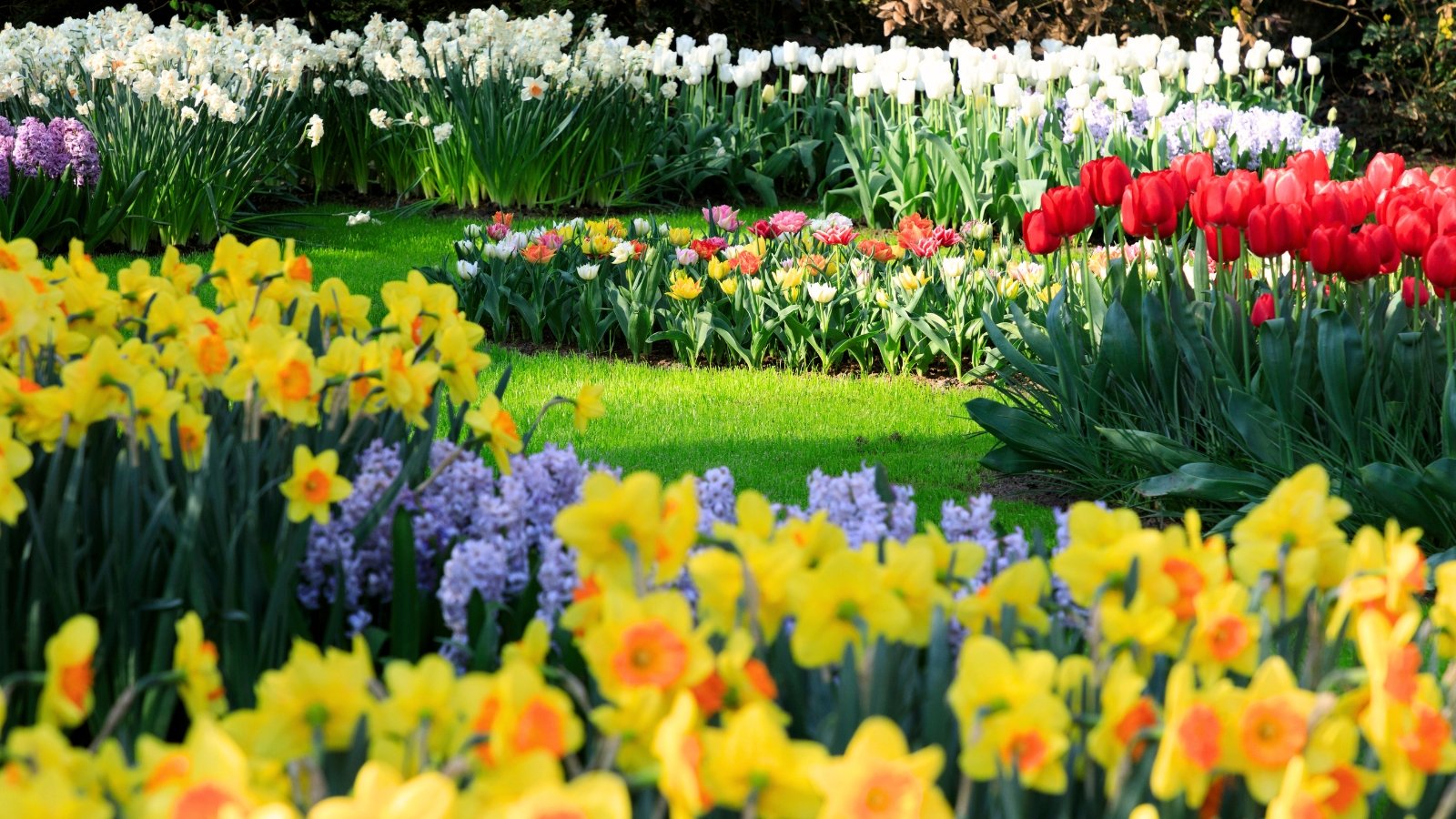
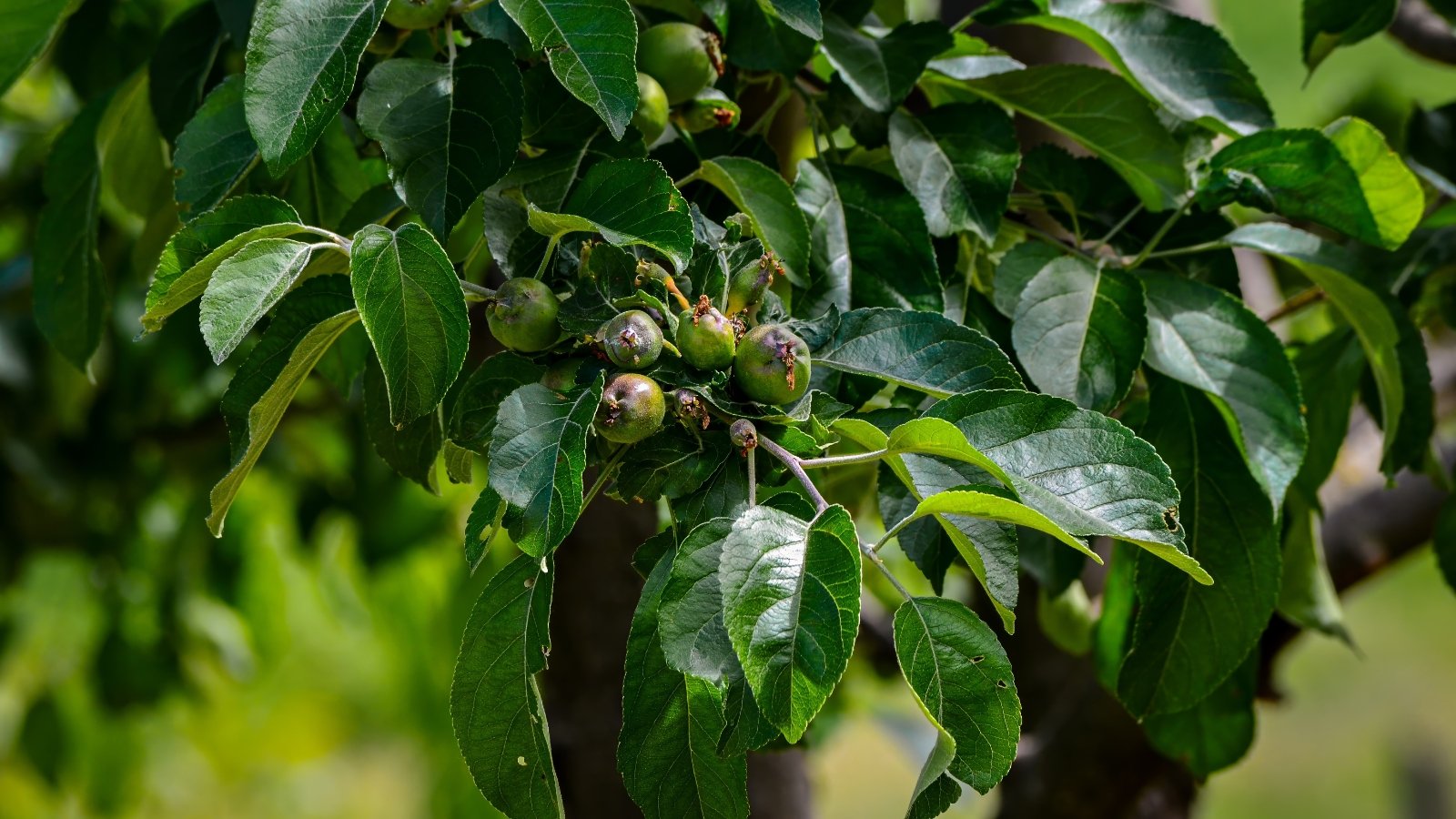
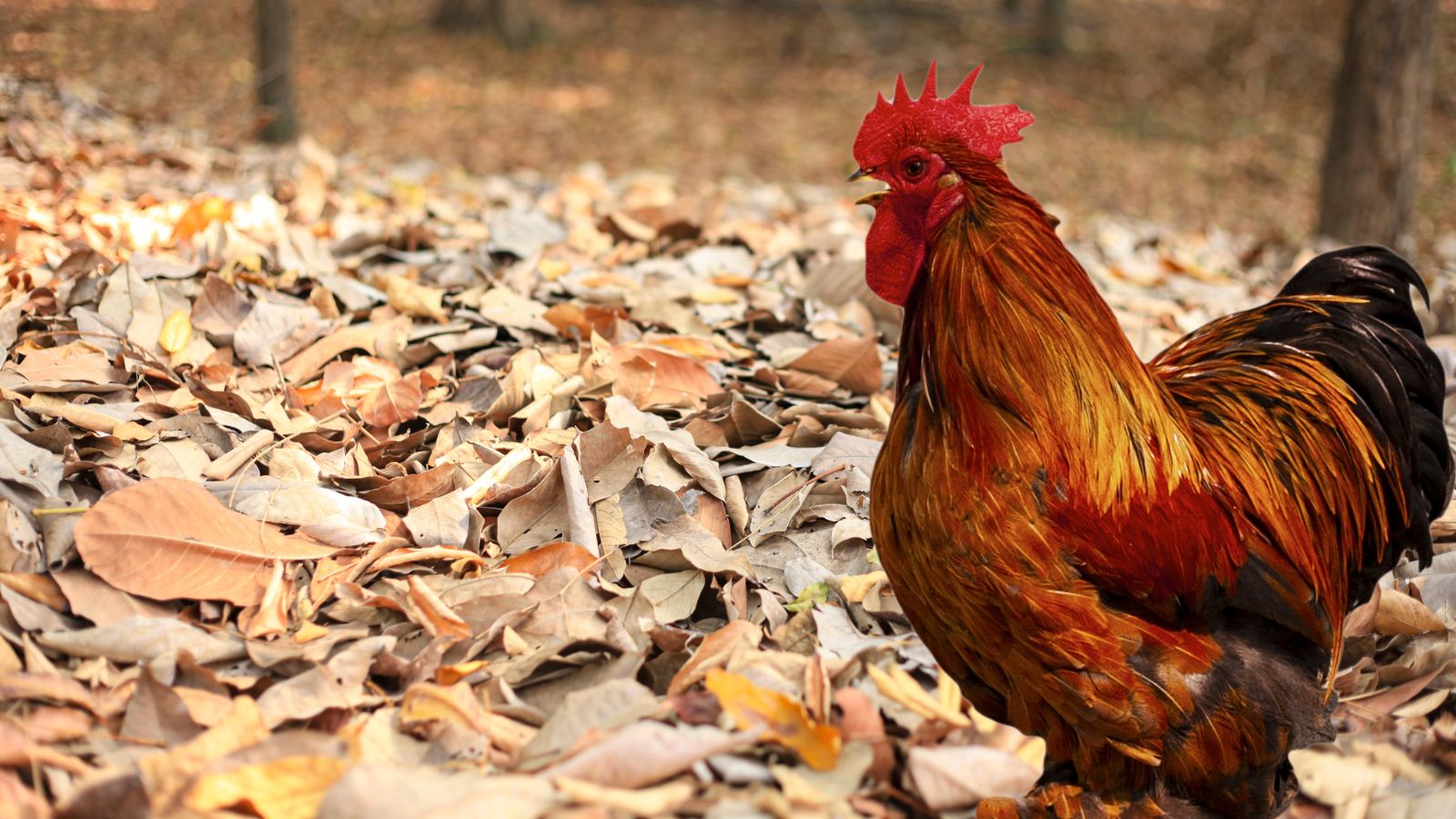
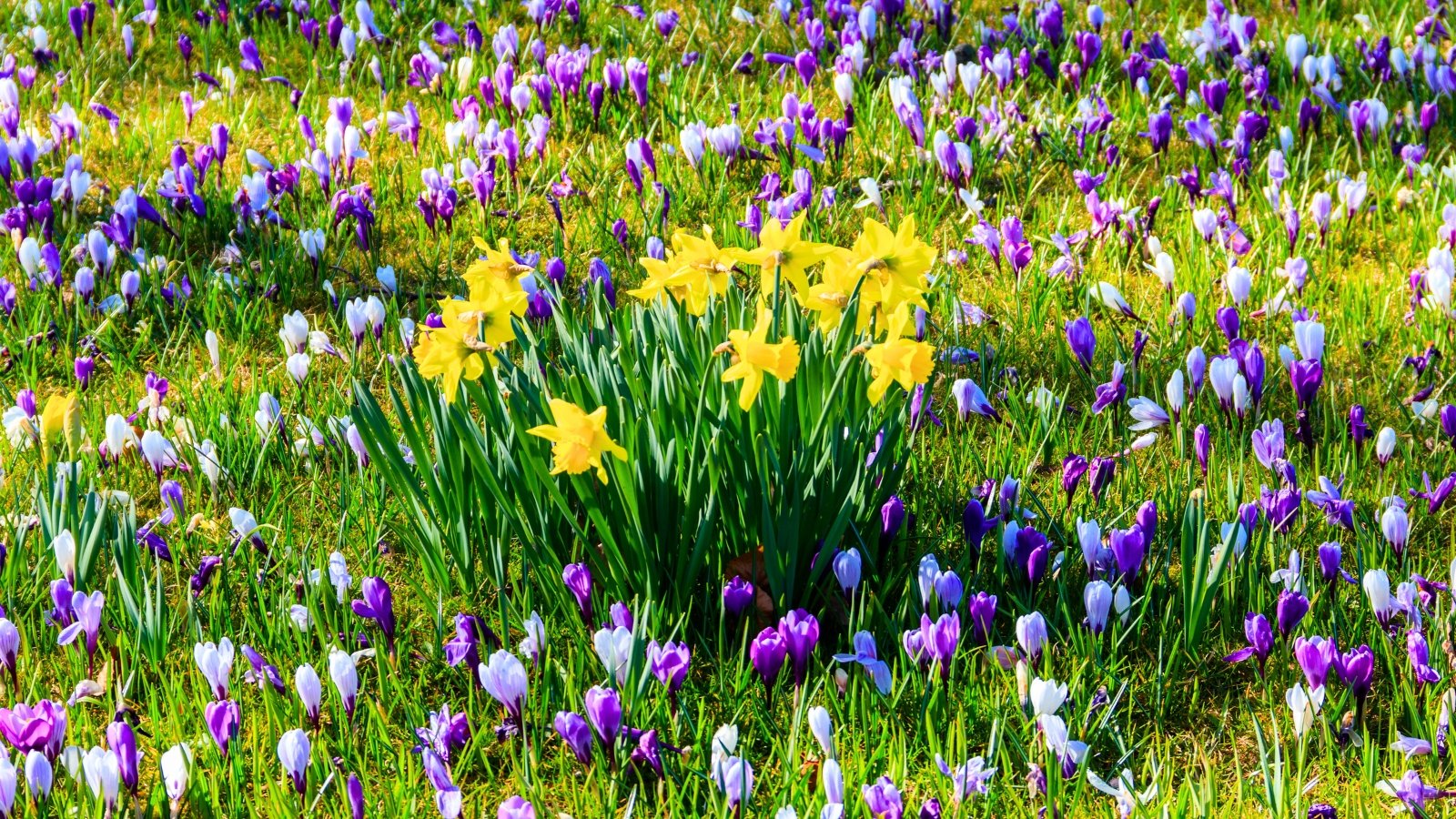
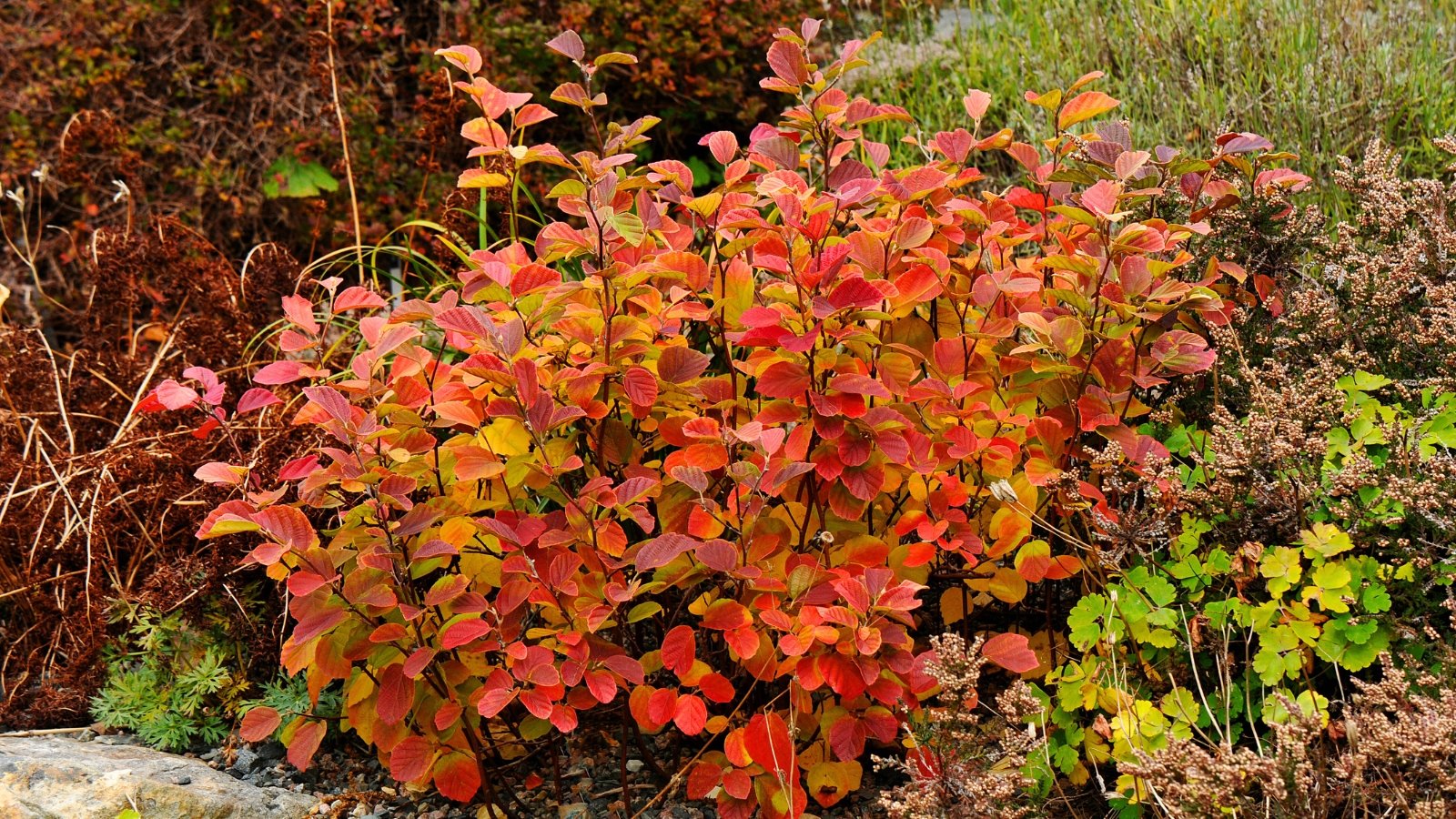
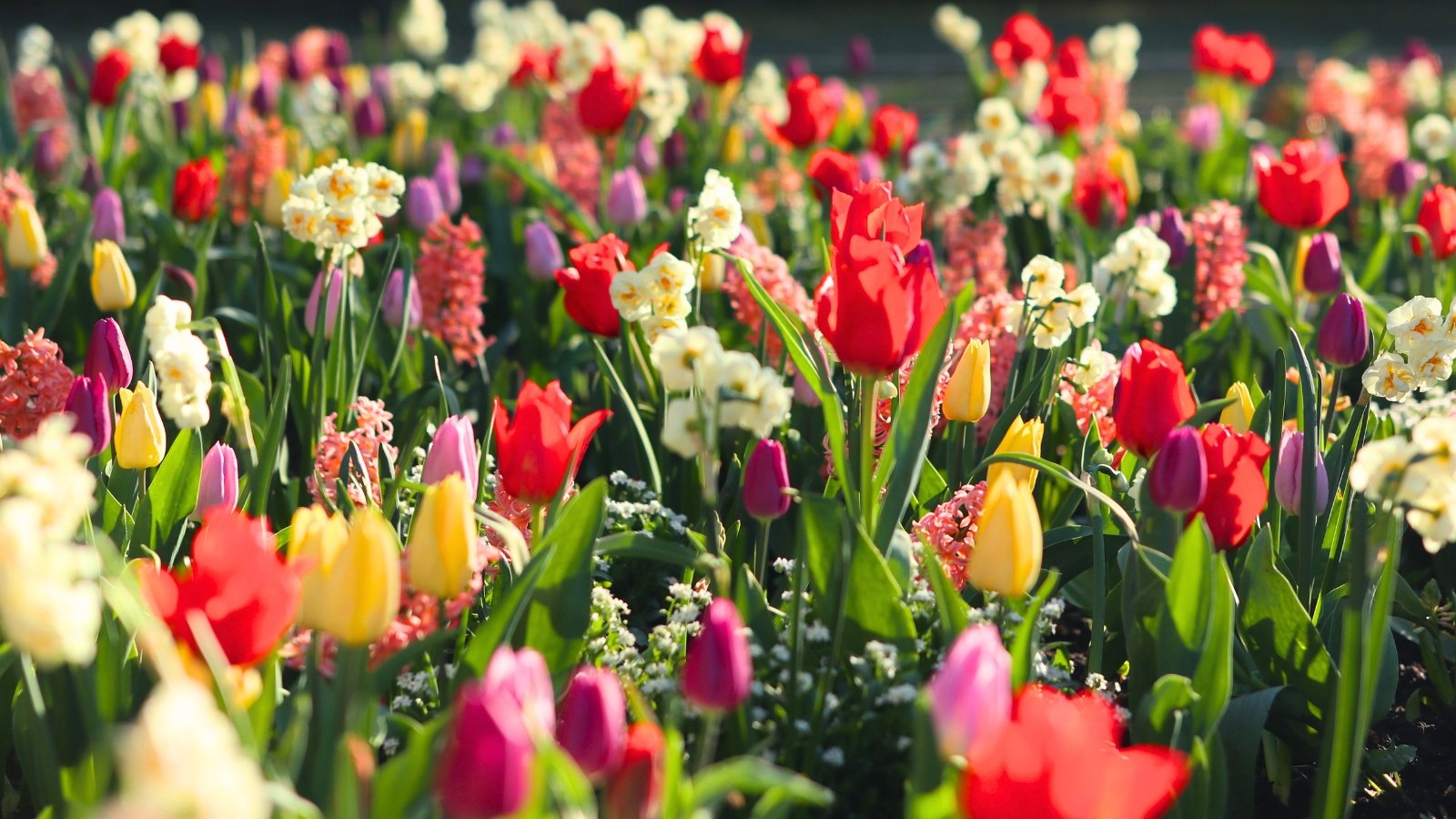














 English (US) ·
English (US) ·  French (CA) ·
French (CA) ·